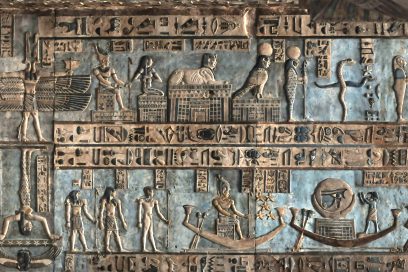Change the way you look at things, and the things you look at change!
The smallest constituent of every form of matter is the atom. There are 118 known atoms (or elements) varying in ‘weight’, magnetic charge and chemical property … having, however, the same basic atomic structure. These building blocks of life, are composed of 3 rings of spinning electrons, revolving around a denser core (or nucleus) of proton and neutron particles. The spinning electrons move at super speed (approximately 2200 km per second!) to create a cloud of energy called the electron cloud. When these ‘clouds’ of energy come into contact with other electron clouds, a magnetic charge either pulls them together or pushes them apart – just like a magnet – to form molecules, which then, on a grander scale, react together to form everything we can see and feel. How atoms and their electrons interact plays a key role in the formation of all forms of matter.
.
Mindblowingly, Quantum and Particle Physics has proven that the behaviour of electrons changes under the simple act of observation. This is demonstrated by the Observer Effect (via the Double Slit Experiment). This experiment clearly demonstrates that when the movement of free electrons is unobserved, they were all seen to move like waves. Under observation, however, they all moved in a single straight lines (or as a particle). What this experiment effectively shows is that matter can behave as either ‘waves’ or ‘particles’ depending on whether or not it is being observed, and suggests that the electrons somehow ‘know’ the difference!
Science is unable to explain exactly how, just through the act of observation, we create or interfere with the particle movements of free flowing electrons. If electrons are a vital component of the formation and construction of everything, observation may be a huge determining factor in the formation of our realities! This leads us to an interesting question – can observation, and its residual consequence, intention, affect our own personal realities? Could prolonged observation of a future outcome of our lives, actually make it happen??
We like to think of space as empty and matter as solid. But in fact there is nothing to matter when you look at it at a subatomic level, most of what is contained within an atom for example is 99.9% space. It is mostly unsubstantial. In fact, if we condensed all the matter contained within the atoms in our bodies, it would sum up to be the size of a pin head! …. Furthermore, none of these atoms and their electron clouds actually touch each other. They are just held together by a magnetic forces. When these atoms and their electron clouds come into close proximity, they either bounce away from each other, or are attracted to each other. This implies that they also have an ability to break free; it suggest an innate fluidity of all things and an open channel for the free flow of energy. In other words, an ability to be influenced and to change.
“Atoms are not things, they are only tendencies”
– Werner Heisenberg – founder of Quantum Mechanics
Simply put …. if we compare atoms (and their spinning electrons) to basketballs, an unobserved basketball court would display multiple basketballs bouncing on the court at random. If we then start to observe the basketball court, could we then alter the behaviour of the said basketballs and create a focal point; the only basketball on the court? Could the ball we choose to observe become part of our reality? Could this highlight the influence of what we choose to focus on? Based upon the Double Slit Experiment – this does not appear to be a totally absurd possibility!
Although this is a very simplified example, in essence it may suggest that whatever we choose to observe is what becomes integrated within our reality, the ‘waves’ become a single focal ‘line’. If the majority of matter as we know it is fluid space, with free flowing energy and the potential of being affected by observation …. this theory is likely to be feasible! So, I guess the important question to ask is – what do you choose to focus on??
“We have to remember that what we observe is not nature herself, but nature exposed to our method of questioning”
-Werner Heisenberg
NAMASTÉ
RISHA JOSHI

History is riddled with theories and controversies regarding the origin of Mankind. Some…